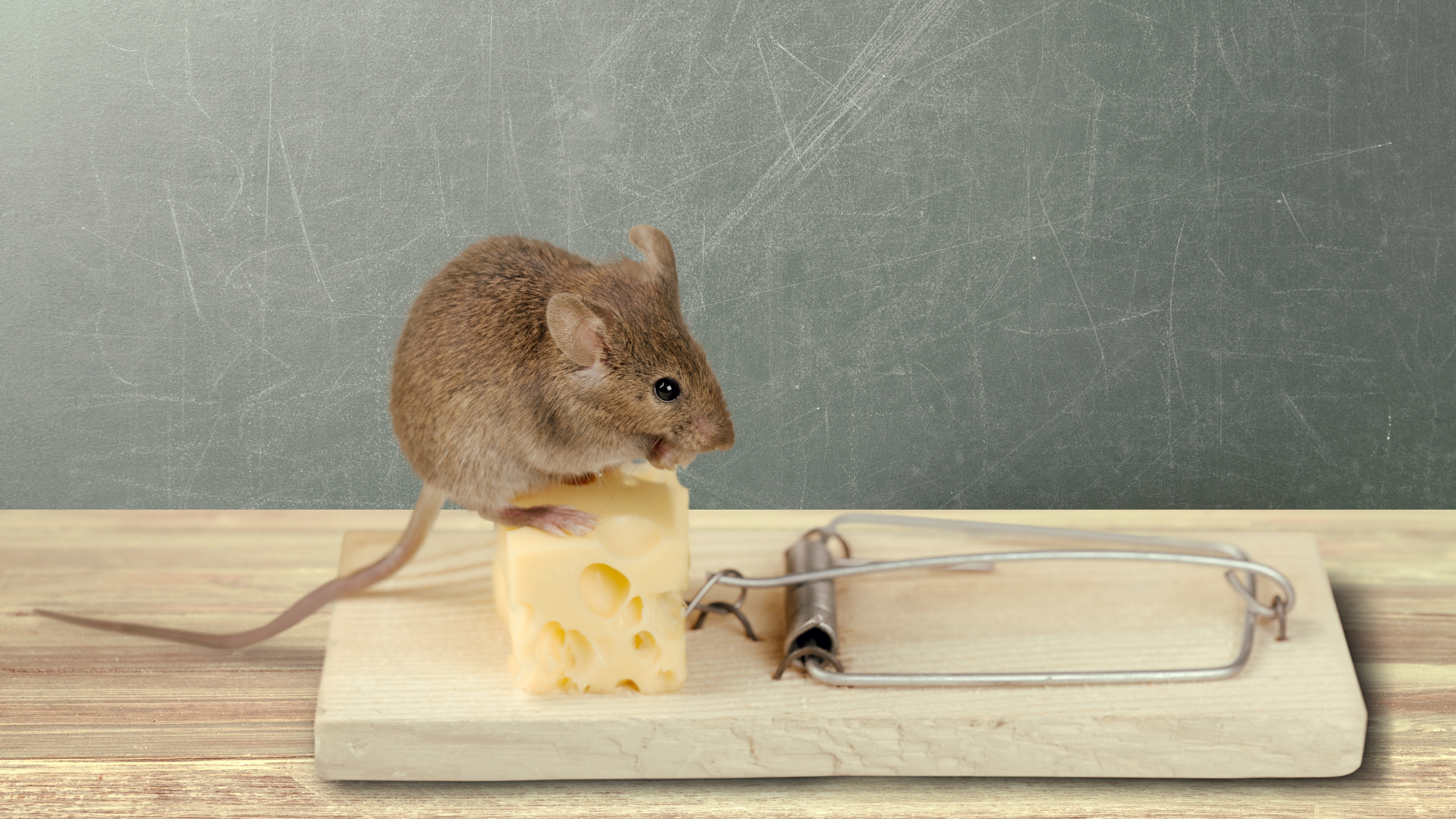
Nobody likes the thought of a mouse infestation in their home. And since the cold spell marks the start of ‘peak rodent season’, you’ll probably want to know how to safeguard your house, and what you need to buy to prevent mice from entering your space.
Not only are such rodents notoriously hard to get rid of, but they can potentially damage your property and structure. And in our bid to remove the things that attract rats and mice to your home in the first place, there are also plenty of misconceptions to be aware of.
We asked the pest experts to shed light on a few common myths about mice, and whether these are actually true or if they’re nothing more than an old wives’ tale.
Myth 1: Trap mice with cheese
Perhaps the most common myth is that mice can be trapped with cheese. But is this really true? “Mice in the home are very common, but along with this can come some absolute myths and misconceptions,” states Ed Dolshun, the VP of Business Development and Technical Director from Catchmaster.
“Easily the top one is putting cheese into your rodent traps or glue boards. This might always work in cartoons, but in real life, mice are attracted to high-protein and high-fat food. You will always be better off putting some peanut butter into your traps to lure mice in.”
If in doubt, however, always call a pest control company who will advise on the best methods. “The application of cheese as bait, for example, will leave little consequence, and a false assumption that you only have one mouse can make someone miss the seriousness of an infestation,” adds Tony King, pest control expert, owner and manager of The Pied Piper.
“Understanding behavior is important. Mice are more motivated by security and convenience than by specific food items. They like to move along walls and corners and find places that provide warmth, shelter, and easy access to food and water.”
What’s more, avoid leaving out specific foods that attract mice to your kitchen, or else they’ll be back for more! “Unsealed cereal boxes, rice, pasta, and other grains can be very attractive to mice,” says John Stewart, pest prevention specialist at Pelsis Group. “These foods are high in carbohydrates, providing mice with a good energy source.”
Myth 2: Borrow a cat to catch the mouse
Another common myth is to borrow a friend or neighbor’s cat to search for the mouse. I’ve certainly been advised to do this in the past by friends who swear by this method. But, what do the experts have to say?
“I am also shocked that folks believe bringing a cat into the home can be a way to solve a mouse problem,” states Dolshun. “Of course it is possible for a cat to catch a mouse or two, but this just is not a real control method. There are so many places that a cat just will not be able to reach.”
If you suspect a mouse infestation, always seek professional advice from a pest control company — and don’t just rely on your feline friends!
Myth 3: Mice will die outside
We often assume that mice will go outside and die, after being poisoned — and not inside the home. However, while this might seem reassuring, experts say this isn’t always the case.
“Unfortunately, rodent baits result in the mouse dying inside your walls, attics, or in their own nests. You might not see them right away, but you’ll eventually smell them,” states Jacob Cohn, A.C.E., COO & Associate Certified Entomologist at Arrow Termite & Pest Control. “And if you believe that mice are all over your house/yard, typically, mice won’t travel much more than 15-30 feet from their nest.”
Similarly, mice are not just visible during the night either, and can strike during daylight (unfortunately). “Some are of the opinion that mice are strictly nocturnal,” adds King. “But where there is food available in homes, they will also eat day and night. The truth is that such myths can lead to ineffective pest control measures. Preventive measures and proper protocols focus on making your home unsuitable for mice.”
How to safeguard your home from mice
So, what are the best methods you can take to protect your home from rodents this peak season? “The best first step is to seal even the smallest cracks that mice can squeeze through—anything larger than a dime,” advises Jeff Schumacher, owner of All-Safe Pest & Termite.
“Use caulk, steel wool, or metal mesh to seal holes and cracks. Make sure dry goods are stored in sealed containers and avoid leaving pet food out overnight. Keep cardboard and paper off the floor and clean up all food crumbs as quickly as possible.
“Outside, neatly trim any plants near your home’s foundation and declutter any storage areas or sheds. Regularly inspect these areas for pest activity so issues can be addressed promptly. If you’re seeing repeated activity, a pest control professional can help you identify entry points and hidden nests and provide long-term solutions”.
Follow Tom’s Guide on Google News and add us as a preferred source to get our up-to-date news, analysis, and reviews in your feeds. Make sure to click the Follow button!
More from Tom’s Guide



